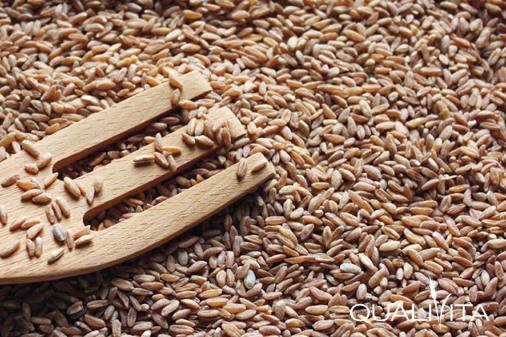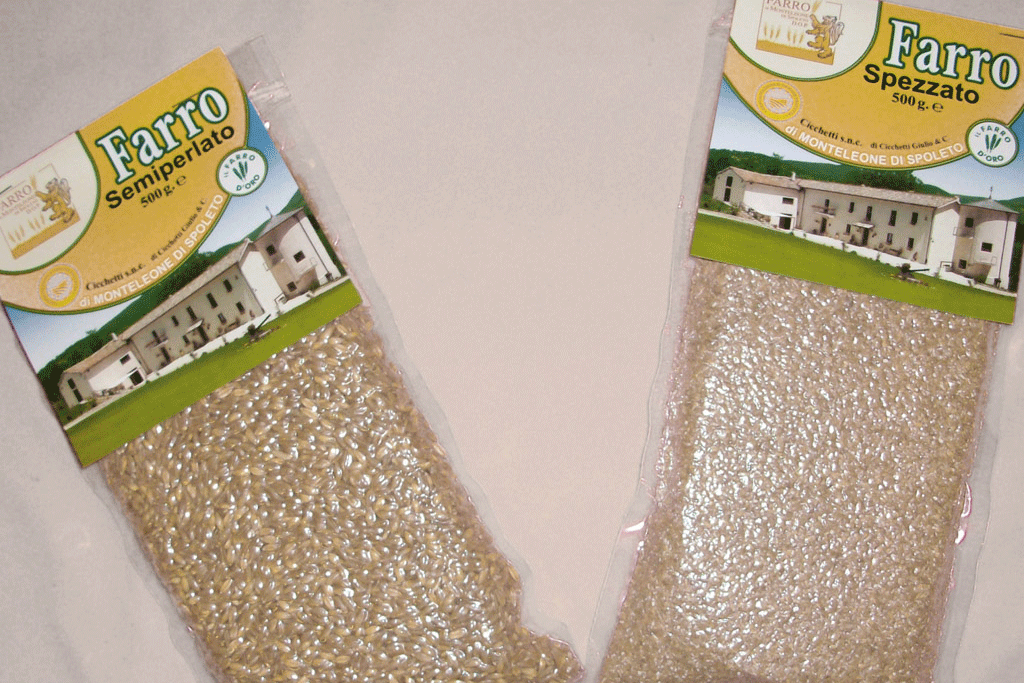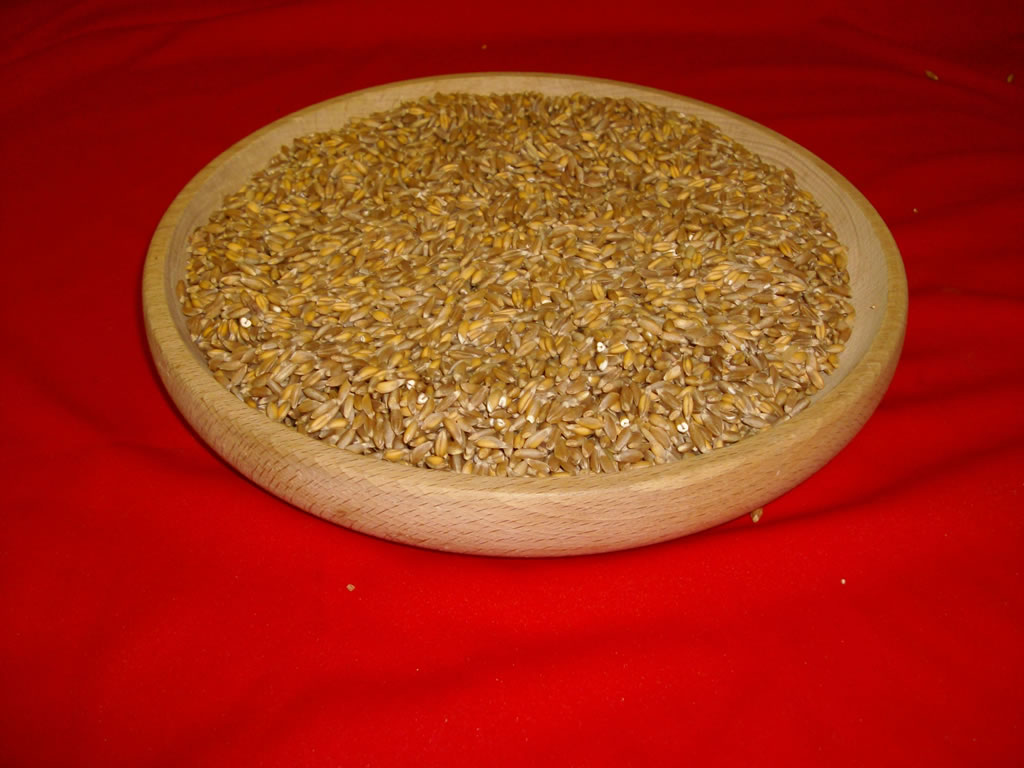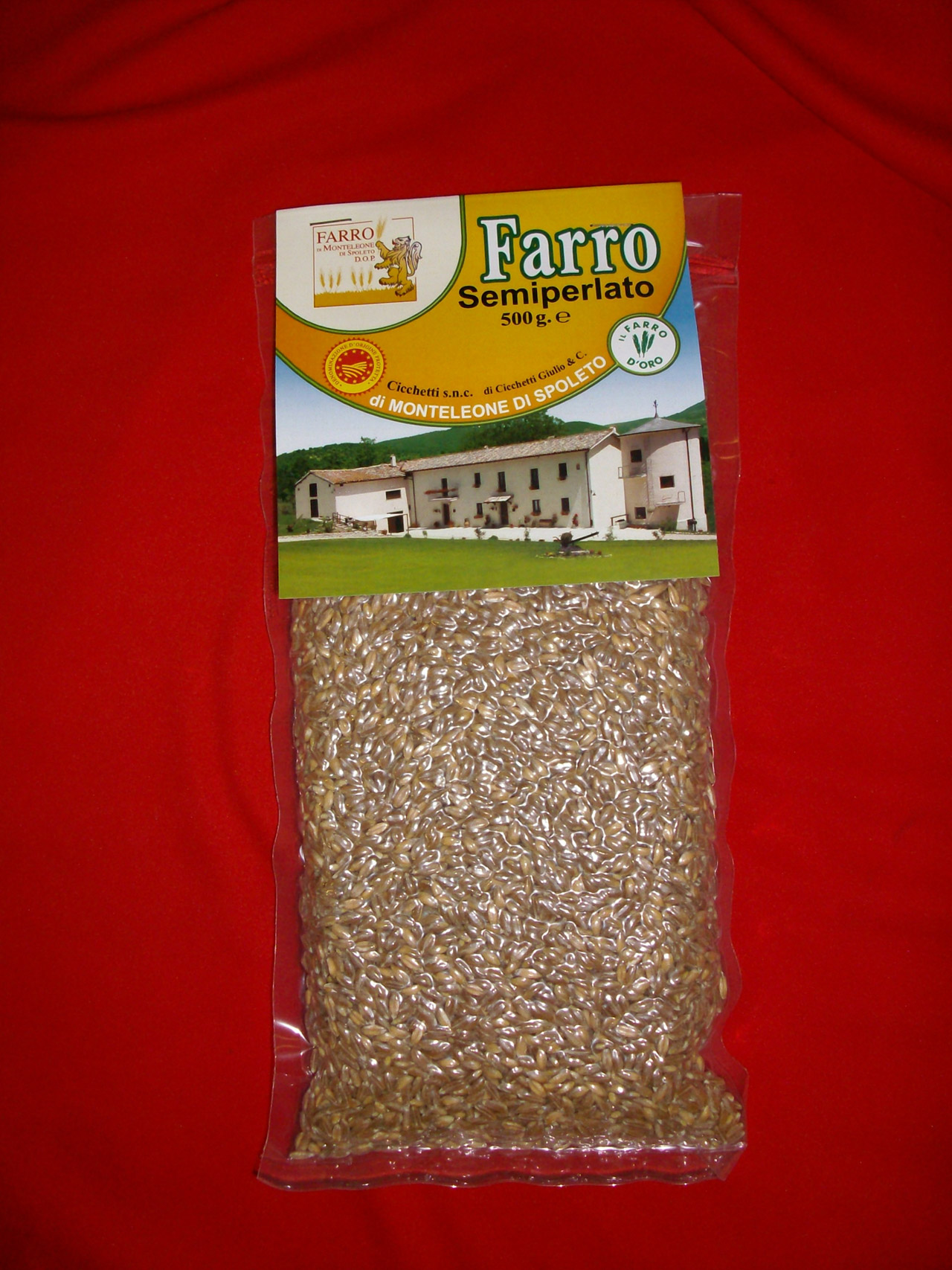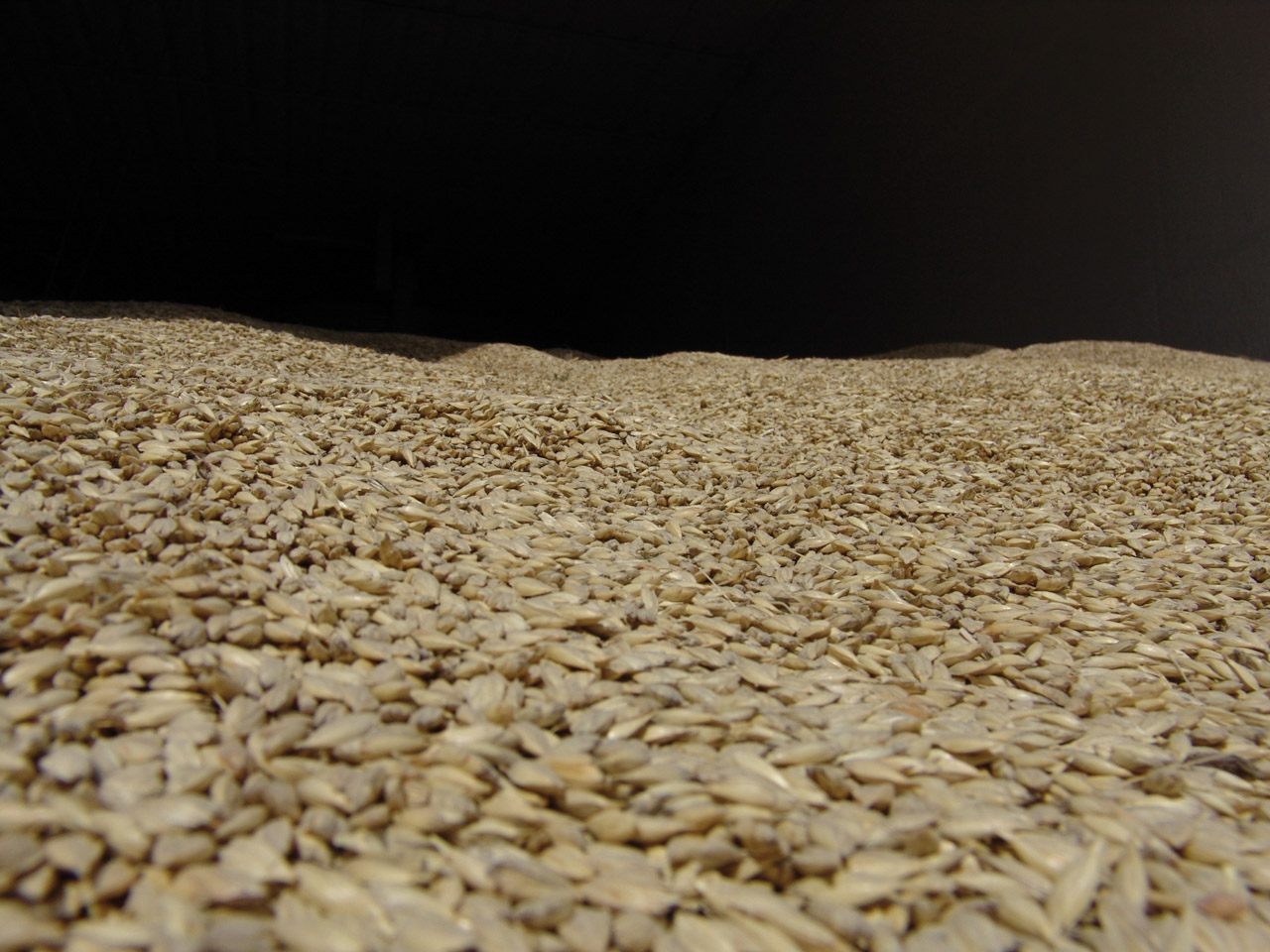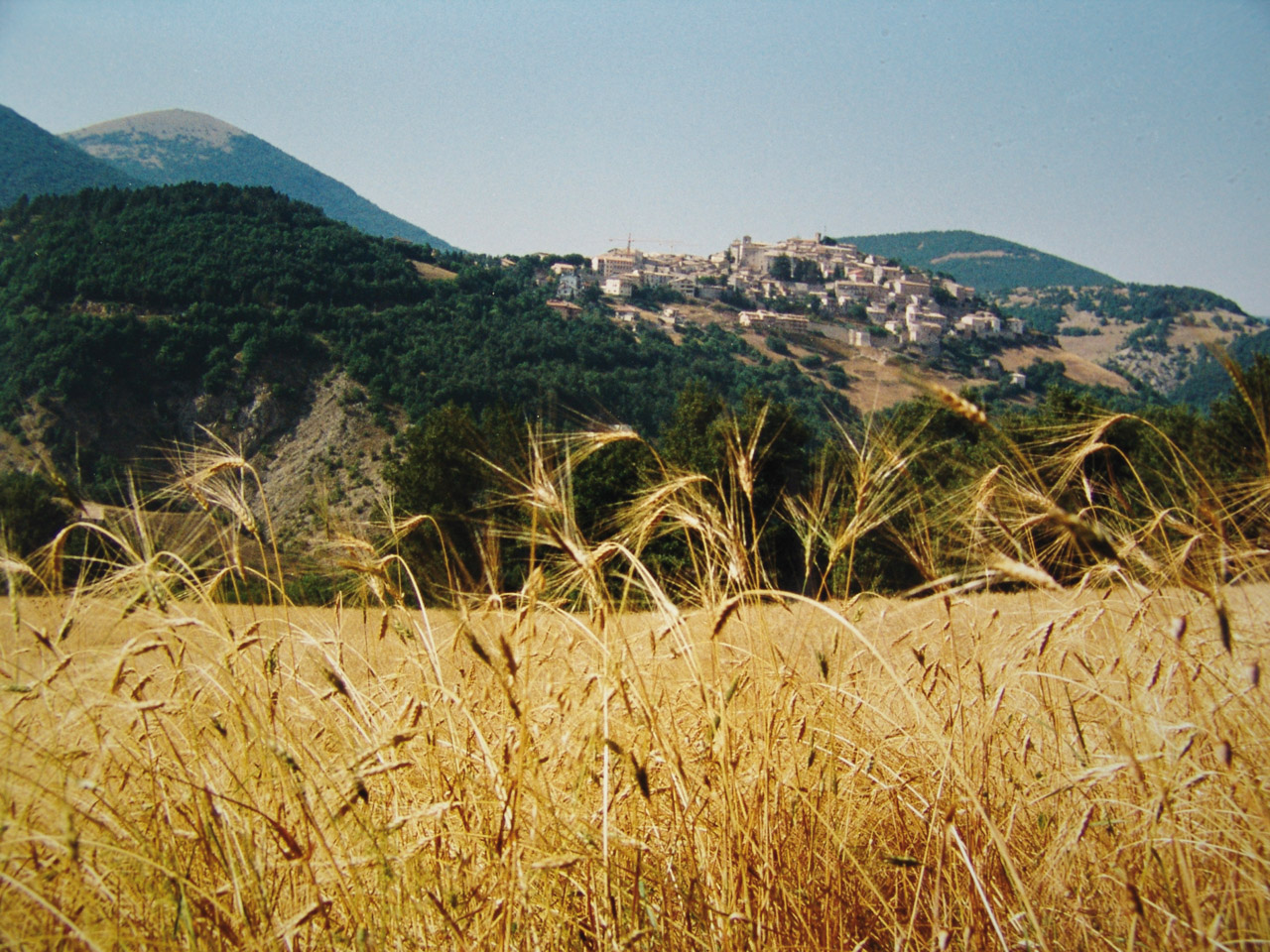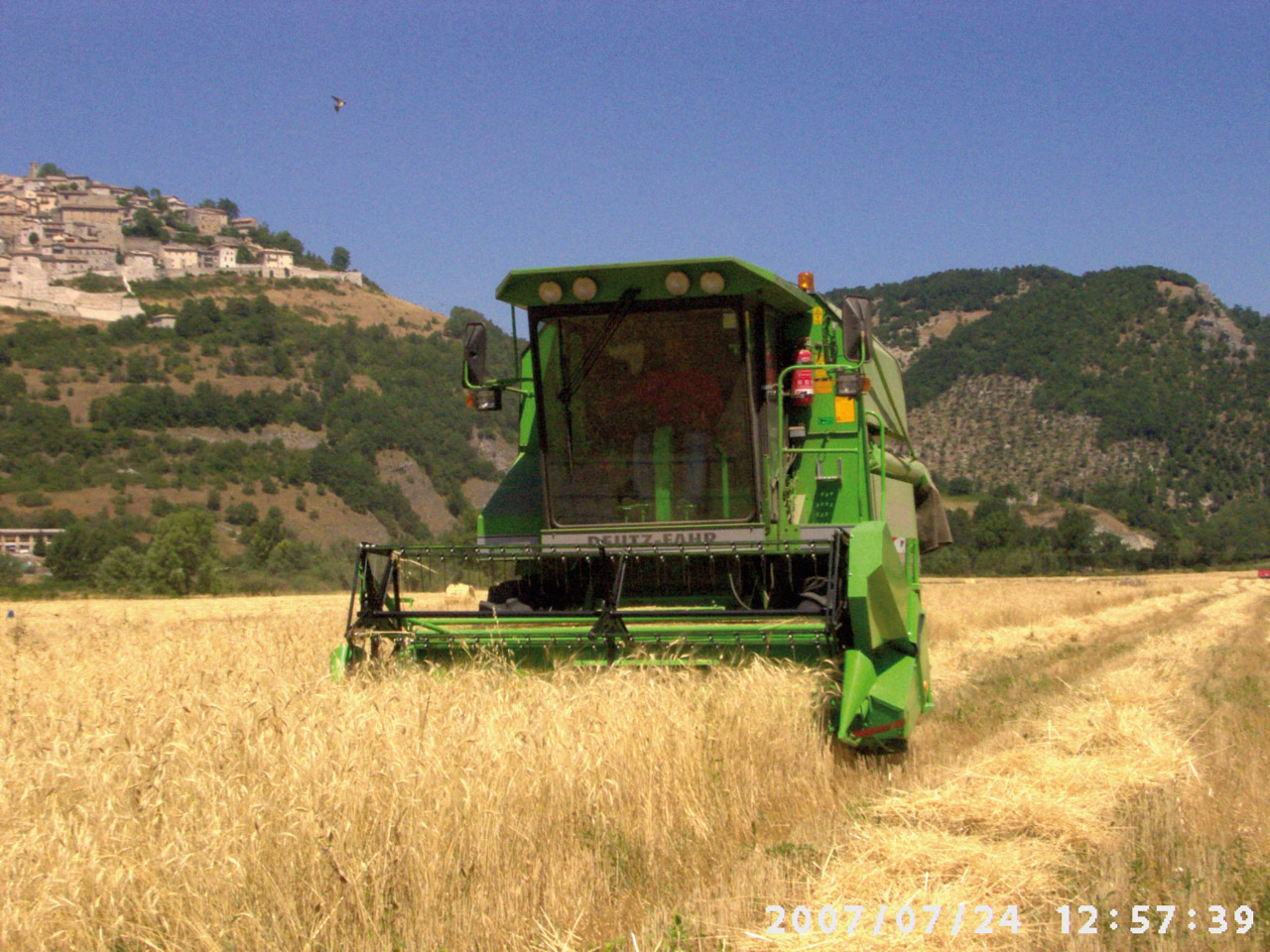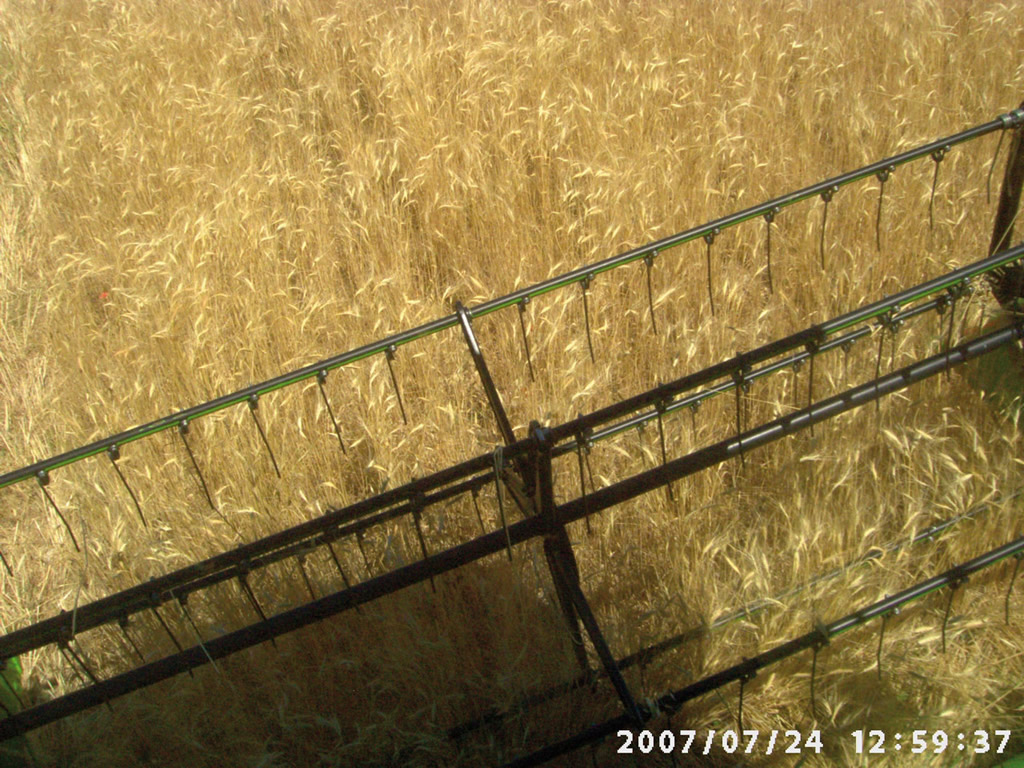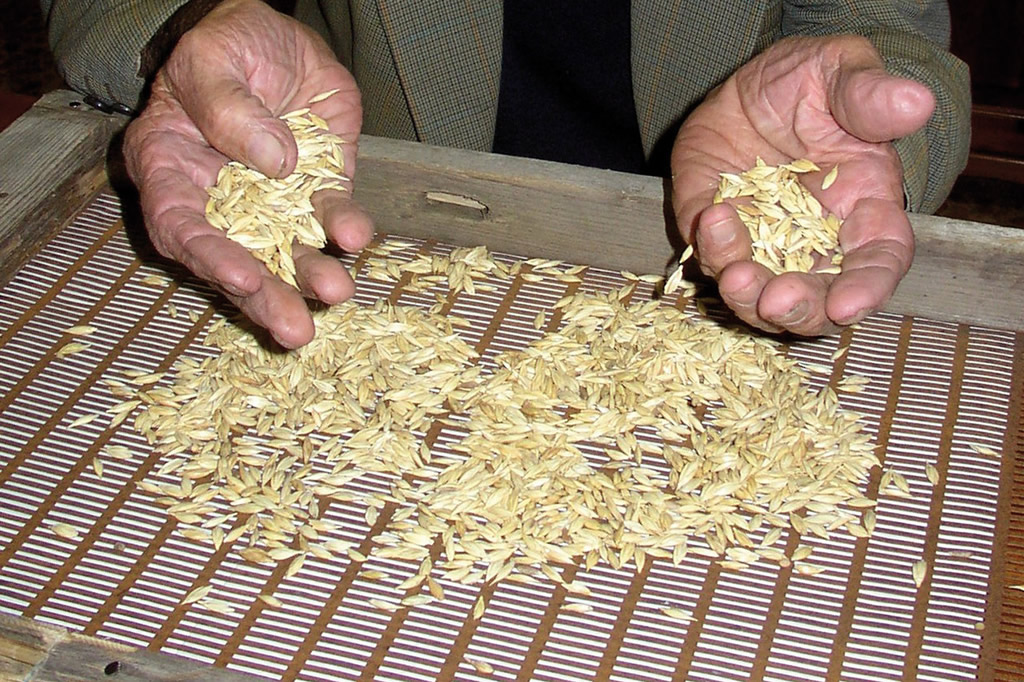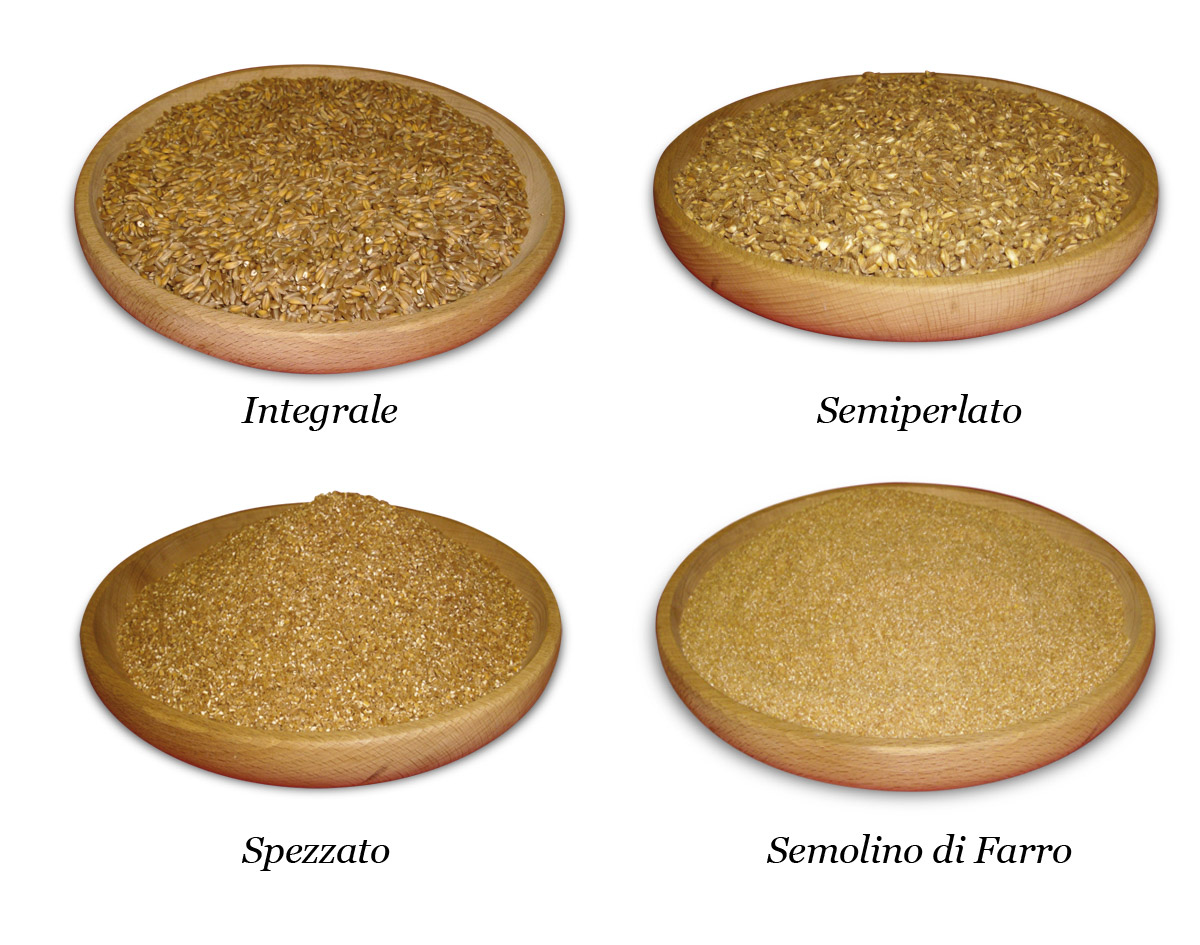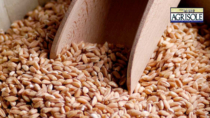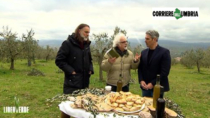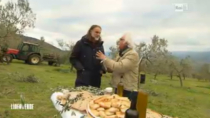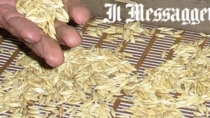Description
The Farro di Monteleone di Spoleto PDO refers to the grain obtained from the local emmer wheat ecotype belonging to the species Triticum dicoccum. It is produced in the following typologies: Integrale (whole), Semiperlato (semi-pearled), Spezzato (cracked) and Semolino di Farro (emmer wheat meal).
Production Area
The production area of Farro di Monteleone di Spoleto PDO is within the municipalities of Monteleone di Spoleto and Poggiodomo, and parts of the municipalities of Cascia, Sant’Anatolia di Narco, Vallo di Nera and Scheggino, in the mountain area (above 700 metres a.s.l.) south-east of Perugia, in the Umbria region.
Production Method
Today’s cultivation technique is that which has been used for centuries. After harrowing, the emmer wheat is sowed mechanically, in rows or scattered, between February 1st and May 10th. Only organic fertiliser is used, using manure or manure by-products. Harvesting takes place in July, August and September by means of cutting-threshing. The processing stages vary according to the different product typologies: the semi-pearled variety is obtained by lightly scrubbing the whole emmer wheat, keeping the kernel intact; the cracked emmer wheat is obtained from whole emmer wheat that has been stripped of the husk and broken into three or four parts; the emmer wheat meal is obtained from milling the whole emmer wheat, producing whole-grain flour which is not powdery, although finer than the cracked variety.
Appearance and Flavour
Whole Farro di Monteleone di Spoleto PDO is long and curved with a light amber-brown colour, and doesn’t have the external husk; it is firm and dry on the palate. The semi-pearled variety is different due to the surface of the kernel, which remains intact, having been lightly scrubbed; it has a lighter colour and is softer on the palate. The cracked emmer wheat is light amber brown in colour and its appearance is characterised by vitreous scales. Finally, the emmer wheat meal is very light brown and pasty on the palate.
History
Farro di Monteleone di Spoleto PDO has ancient origins. This is demonstrated by several historic findings, such as the 6th century BC Etruscan tomb in Monteleone, known as the “Chariot tomb”, where they found emmer wheat kernels amongst the various different cereals. Archive research brought to light documents which confirm that emmer wheat cultivation in Monteleone di Spoleto began to spread during the 16th century. Centuries later the importance of this cereal returned, when emmer wheat saved the population of Monteleone from starving during the Second World War. When the Germans arrived, they requisitioned all of the population’s foodstuffs, aside from the emmer wheat because in Germany it was only used to feed animals. The inhabitants, who were used to eating it, therefore survived.
Gastronomy
Farro di Monteleone di Spoleto PDO should be kept in a cool, dry place, vacuum-packed or in glass recipients. The whole product must be soaked for two hours before cooking; the semi-pearled variety cooks in 30 minutes, without soaking beforehand, the same going for the cracked product, which takes 25 minutes to cook. It can be eaten as a first or second course, a side dish, cold dish or a complete meal. It is rich in vitamins and mineral salts, and is a basic ingredient for many typical dishes, such as imbrecciata, Saint Nicholas’s recipe for Valerian polenta.
Marketing
The product is marketed as Farro di Monteleone di Spoleto PDO, in the following typologies: Whole, Semi- Pearled, Cracked and Emmer Wheat Meal. It is sold in packets weighing from 100 g to 25 kg, in sealed packaging that is in compliance with current legislation. The label may bear the specification “Prodotto di Montagna” (mountain product). Processed products must bear the wording “prodotto realizzato con Farro di Monteleone di Spoleto” (product made with Farro di Monteleone di Spoleto).
Distinctive Features
Farro di Monteleone di Spoleto PDO owes its specific characteristics – flat, short and tapering ear, with a vitreous and compact kernel, with floury residues when broken – to the pedoclimatic conditions of the production area, where the soils impede stagnation during the damp seasons.





